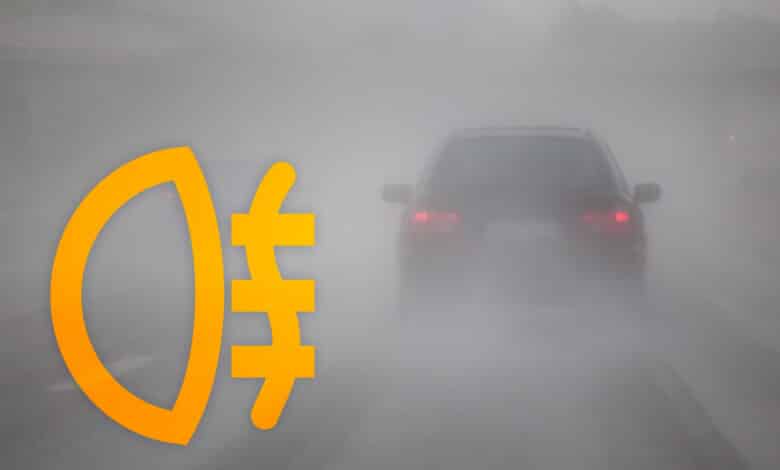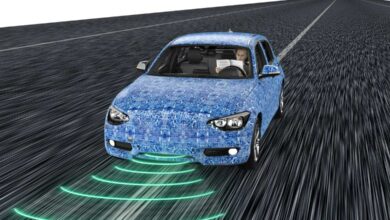
Fog is not only an atmospheric phenomenon, but also a challenge for every driver. When the fog suddenly rolls in, visibility can dramatically deteriorate, increasing the likelihood of traffic accidents. At such moments, proper lighting on the vehicle is critical. Rear fog lights and fog lamps are specifically designed to increase the visibility of the vehicle while allowing the driver to see better. But when are you allowed to switch on the rear fog lights? And what do the Road Traffic Regulations (StVO) say about this? We get to the bottom of these questions and offer you valuable tips for safe driving in fog.
Launching rear fog lights: legal regulation creates clarity
The Road Traffic Regulations (StVO) lay down clear rules for the use of rear fog lamps and fog lights, so the question “When are you allowed to switch on rear fog lamps?” is quickly answered. According to Section 17 (3) of the StVO, rear fog lights may only be switched on if visibility due to fog is less than 50 meters. The situation is similar with fog lights: These may be switched on if visibility is significantly impaired by fog, snow or rain. But what does this mean in concrete terms?
- You are allowed to use the rear fog light if visibility is less than 50 meters. If a vehicle is driving behind you, however, you should switch the light off again so as not to dazzle the driver.
- In addition, when visibility is below 50 meters, there is a maximum speed of only 50 km/h – no matter where you are.
- However, there is no specific fog light or rear fog light obligation. You may use both at your discretion. In case of incorrect use, however, you blühen warning fines of between 20 and 35 euros.
- Contrary to popular belief, rear fog lights may also be switched on in built-up areas if the situation requires it.
- Fog lights themselves (front) you may also turn on in Germany only in poor visibility conditions. However, it does not necessarily have to be fog, but also in rain and snow, the use is usually allowed.
Cockpit indicator lights: what do the two lights with the lens and the wave mean?
When you turn on rear fog lights or fog lights, special indicator lights – the fog light icon and the rear fog light icon, respectively – light up in your car’s cockpit. A green indicator light signals that the fog lights are active, while a yellow indicator light stands for the rear fog lights. These lights are not only a visual confirmation that the appropriate lights are on, but also a reminder to turn them off when visibility improves. If you ignore these reminders, you not only risk fines, but also put the safety of following traffic at risk.
Penalties and consequences: What happens if you use the fog light incorrectly?
Not only does the question “When are you allowed to turn on rear fog lights?” come up during driver’s license tests? “, but even more often when you are actually on the road. The incorrect use of fog lights and fog lamps is not only dangerous, but can also result in legal consequences. A warning fine of 20 euros is the usual penalty for improper use of these lights. However, this warning fine can increase if you endanger other road users by using them incorrectly or if it even results in an accident. Therefore, it is essential to know exactly the rules of the StVO and comply with them to ensure both your own safety and that of other road users.
Which light in fog? Tips for driving in poor visibility
Fog presents one of the most challenging conditions for drivers. But when are you allowed to turn on rear fog lights? Besides using rear fog lights and fog lights, there are a few aspects you should keep in mind when driving into the more or less unknown:
- The low beam should always be on in poor visibility conditions, even during the day. It not only improves your visibility, but also makes you more visible to other road users.
- Although you might think that high beams give you a better view into the distance, the opposite is true in fog. This reflects namely the light and worsens the visibility even by dazzling you.
- In fog, it is advisable to increase the safe distance from other vehicles. This will give you more time to react if the car in front suddenly brakes.
- The speed should always be adapted to the visibility conditions. If visibility is less than 50 meters, the maximum speed is limited by law to 50 km/h.
- In foggy visibility conditions, it is particularly important to be careful at intersections and junctions. Due to the limited visibility, other road users can easily be overlooked.
- Look out for road markings, reflectors and delineators. They can help you see the road better and navigate safely without going off the road.
Which vehicles are required or allowed to have rear fog lights?
The equipment with rear fog lights is not the same for all vehicles. Multi-lane motor vehicles that can reach a maximum speed of more than 60 km/h, as well as their trailers, must be equipped with one or two rear fog lamps. Other motor vehicles and trailers may be equipped with one rear fog light, but are not required to be. So it’s important to know the specific requirements for your vehicle.
Motorcycles are a special category on the road and have their own rules and regulations, including when it comes to the use of fog lights and rear fog lights. In Germany, equipping motorcycles with fog lights and rear fog lights is not a legal requirement. However, if they are installed and used, the same rules apply as for other vehicles.
Use rear fog lights and fog lamps when driving abroad
If you plan to drive your car abroad, it’s important to know the country-specific rules for using rear fog lights and fog lamps. Laws can vary from country to country, and what is allowed or prohibited in Germany does not necessarily apply abroad. So the question “When are you allowed to turn on rear fog lights?” also arises in other countries.
For example, Austria allows the use of fog lights even during the day, which is not the case in Germany. In some countries, penalties can even be imposed for not using fog lights in poor visibility conditions. Therefore, it is advisable to thoroughly inform yourself about the respective traffic regulations before driving abroad. This can not only avoid penalties, but also help keep you and other road users safe on the road.



